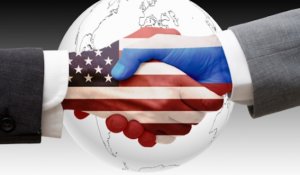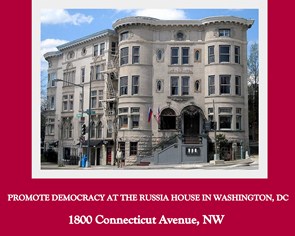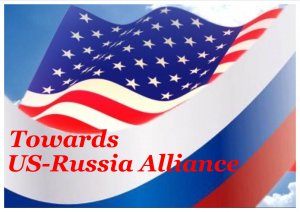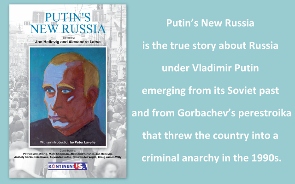
 To Remember the Day Russians and
Americans embraced each other in the final days of a horrific Second World War
when meeting at the Elbe River in Germany on April 24. 1945, should not be a
piece of nostalgia for those that have fallen, but a driver for partnership
among people who join together to fight for peace and respect so that we can
commonly share today the love of country and hope for peace. If each other were
to cooperate where and whenever they may be called upon to be a team to uphold
common goals and ideals, the narrative of today would be different from the
ones about Russia’s encirclement and NATO expansion but compassion to respect
the integrity of other nations sovereignty and not to choose 19th-century
relics of the US Monroe Doctrine or Russia and its Near Abroad policies
embracing ‘spheres of influence’ as envisioned in the Hitler-Stalin Pact of
August 28, 1939, to divide up Eastern Europe in exchange of Russian and German non-aggression
toward each other. Instead it is about allowing the people of sovereign nations
to choose their future voluntarily.
To Remember the Day Russians and
Americans embraced each other in the final days of a horrific Second World War
when meeting at the Elbe River in Germany on April 24. 1945, should not be a
piece of nostalgia for those that have fallen, but a driver for partnership
among people who join together to fight for peace and respect so that we can
commonly share today the love of country and hope for peace. If each other were
to cooperate where and whenever they may be called upon to be a team to uphold
common goals and ideals, the narrative of today would be different from the
ones about Russia’s encirclement and NATO expansion but compassion to respect
the integrity of other nations sovereignty and not to choose 19th-century
relics of the US Monroe Doctrine or Russia and its Near Abroad policies
embracing ‘spheres of influence’ as envisioned in the Hitler-Stalin Pact of
August 28, 1939, to divide up Eastern Europe in exchange of Russian and German non-aggression
toward each other. Instead it is about allowing the people of sovereign nations
to choose their future voluntarily.
By Herbert Reginbogin
To Remember the Day Russians and Americans embraced each other in the final days of a horrific Second World War when meeting at the Elbe River in Germany on April 24. 1945, should not be a piece of nostalgia for those that have fallen, but a driver for partnership among people who join together to fight for peace and respect so that we can commonly share today the love of country and hope for peace. If each other were to cooperate where and whenever they may be called upon to be a team to uphold common goals and ideals, the narrative of today would be different from the ones about Russia’s encirclement and NATO expansion but compassion to respect the integrity of other nations sovereignty and not to choose 19th-century relics of the US Monroe Doctrine or Russia and its Near Abroad policies embracing ‘spheres of influence’ as envisioned in the Hitler-Stalin Pact of August 28, 1939, to divide up Eastern Europe in exchange of Russian and German non-aggression toward each other. Instead it is about allowing the people of sovereign nations to choose their future voluntarily.
New approaches to keep the populations on all continents safe and prosperous are indispensable. Permanent neutrality is an age-old strategy for small and middle-sized powers to maneuver ‘between the blocs’ and remain prosperous in the face of international turmoil. Despite having failed multiple times for not being armed enough to keep countries and territories safe from destruction, it has also often succeeded in pacifying entire regions. For the twenty-first century, it harbors the potential to become a pillar of new armed security and humanitarian service architecture in Europe for the area between the West and Russia, referred to as the in-between states Ukraine, Georgia, Belarus, Moldova, Armenia, and Azerbaijan and Asia. A Common European-Trans-Atlantic and Pacific Home from Vancouver to Vladivostok is what our forefathers fought so that borders would not divide us. Still, history is needed to restore the trust we need in an Age of Global Crisis.


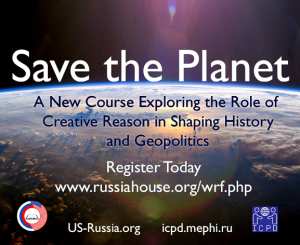
_jpg/250px-ElbeDay1945_(NARA_ww2-121).jpg)
